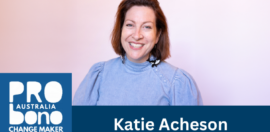Disability Support Demand on the Rise - Report
8 July 2014 at 11:25 am
The number of Australians accessing disability support services has grown by 12 per cent since 2008-09, with 312,539 people accessing services in 2012-2013, a recent report by the Australian Institute of Health and Welfare (AIHW) has shown.
According to the report, Disability support services: services provided under the National Disability Agreement 2012-13, 45 per cent of service users used community support services, 41 per cent used employment services, 18 per cent used community access services, 14 per cent used accommodation support services and 12 per cent used respite services.
It also showed that spending on disability support services rose to $7.2 billion in 2012-13 – a 4 per cent rise between 2011-12 and 2012-13, and 23 per cent since 2008-09, after adjusting for inflation.
The number of service users generally increased over the five years to 2012-13 – by 12 per cent between 2008-09 and 2012-13.
“The report provides important contextual and baseline information as the disability policy and service delivery environment continues to evolve, particularly with the implementation of the National Disability Insurance Scheme (NDIS) in 2013-14,” AIHW spokesperson Dr Pamela Kinnear said.
“However, we've seen growth in the use of services slow recently, with a slight drop of 2 per cent in the number of service users between 2011-12 and 2012-13.
“This change in the number of service users was not evenly spread across jurisdictions or service groups and reflected both an actual decrease in service users in some jurisdictions and some changes in the way the data were collected or reported.”
The report showed that users of disability support services were diverse in 2012-13, with 59 per cent were male, 87 per cent were Australian-born, 6 per cent were Indigenous Australians, and 54 per cent lived with their families.
The most commonly reported disability groups continued to be intellectual (32 per cent), physical (30 per cent) and psychiatric (27 per cent), though the proportion of service users with an intellectual disability dropped slightly over the five years to 2012-13.
The report showed most service users required at least some assistance in one or more of three broad life areas – the activities of independent living (64 per cent); the activities of work, education and community living (61 per cent) and the activities of daily living (55 per cent).







